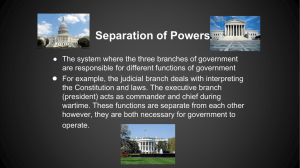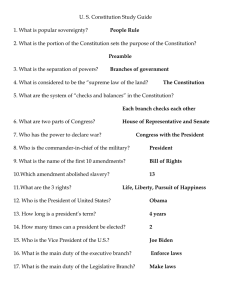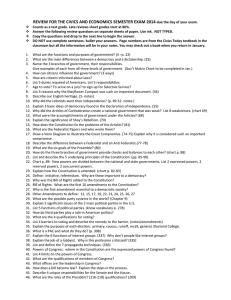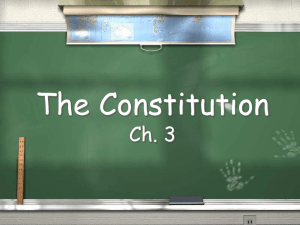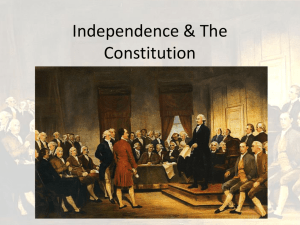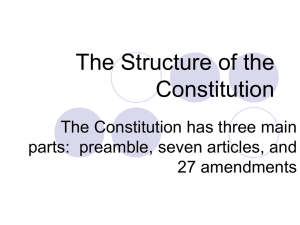UNIT 2
advertisement
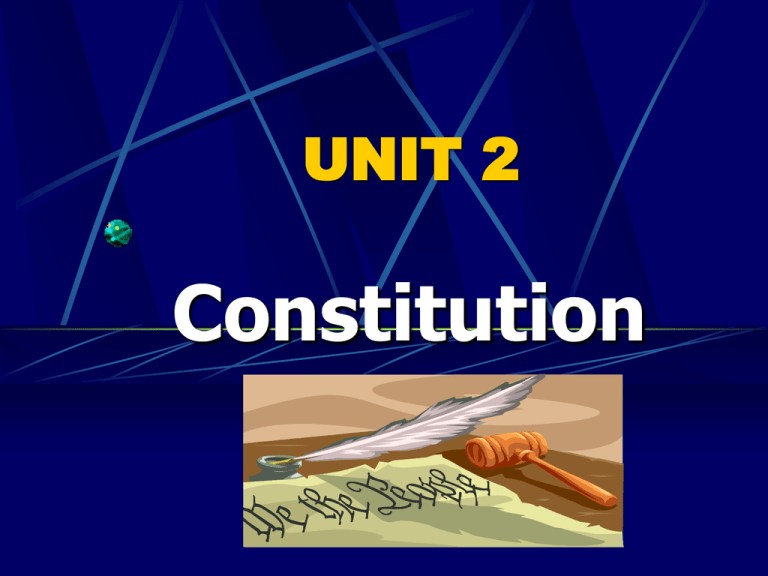
UNIT 2 Constitution II. Articles of Confederation A. What it created and why 1. Confederation – loose association of states 2. Federal gov’t had no real power over the states 3. People feared a strong gov’t that might take away rights & freedoms B. Weaknesses of A.O.C. 1. 2. 3. 4. 5. No president No court system Congress had no power to tax 9 of 13 states had to approve new laws Congress answered to state legislature not the people 6. Congress couldn’t regulate trade 7. Congress couldn’t coin & print money 8. Congress couldn’t establish armed forces each state kept its own troops III. Constitutional Convention A. Secret meeting 1. Constitution written 2. Corrected all the weaknesses of A.O.C. 3. Great Compromise B. Ratification (Passage) 1. 2. 3. 4. Federalists – in favor of strong gov’t Anti-federalists – opposed to strong gov’t Bill of Rights added before Anti’s would ratify it Federalist papers IV. Constitution Constitution – written plan of gov’t A. Federal system – power shared by federal & state 1. Federal powers - delegated 2. Concurrent powers – shared power 3. Reserved powers – state power B. Separation of powers 1. Legislative – Congress – make laws – article 1 2. Executive – President – carry out law – article 2 3. Judicial – Supreme Court – judge law – article 3 C. Checks & Balances 1. Powers each branch has over the other 2, so that one branch doesn’t become too powerful 2. Watergate (Nixon resigned) D. Changing the Constitution 1. Amendment – written change 2. Interpretation 3. Customs http://www.archives.gov/nationalarchivesexperience/charters/constitution.html V. Rights & freedoms A. Bill of Rights 1. First 10 amendments to the Constitution B. Civil rights amendments 1. 13th – outlaw slavery 2. 14th – gave blacks citizenship http://www.archives.gov/historicaldocs/document.html?doc=4 C. Suffrage rights (Voting) 1. 2. 3. 4. 5. 6. 15th 17th 19th 23rd 24th 26th – blacks – voters to elect state legislatures – women – D.C. – forbade poll tax – age 18 D. First Amendment Religion clause


